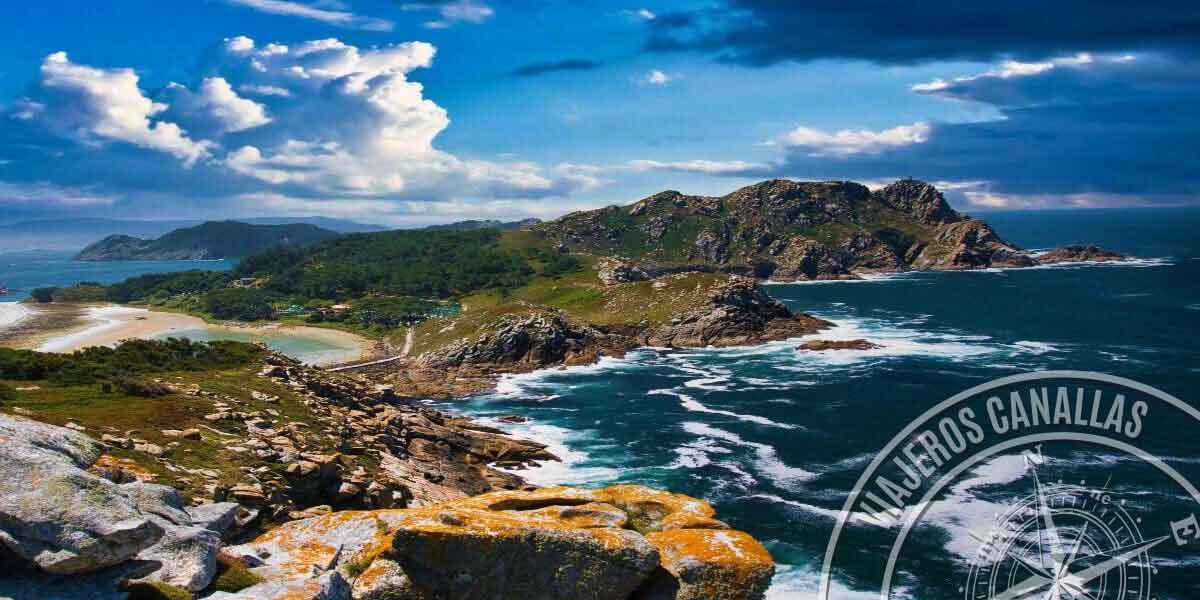A tour of the best beaches in Galicia
Galicia, a real gem in northwest Spain, is not only famous for its green landscapes, charming villages and gastronomy, but also for its stunning beaches along the Atlantic coast. From golden sands to rugged cliffs, the Galician community offers sandy beaches to suit all tastes and captivate visitors.
The best time to enjoy the beaches of Galicia is the summer season, specifically the months of July and August, as the water temperature rises and allows you to take a dip or two (although we all know that the water in Galicia is frozen!). What you should bear in mind is that the most famous beaches tend to get crowded and it's difficult to find a parking space.
In this blog we will give you another reason to visit this Galician paradise by showing you some of the most special Galician beaches.
Rodas Beach, in the Cíes Islands:
This beautiful sandy beach is located in the protected natural paradise of the Cíes Islands. According to the British newspaper The Guardian it is considered the best beach of the world; for others, it is considered the Galician Caribbean. This beautiful sandy beach is located in the protected natural paradise of the Cíes Islands and is the largest and most important in the archipelago.
Its fine, white sand and crystal-clear waters stand out in an environment of wild nature and dunes. It is the perfect place to enjoy nature and get away from the noise and daily routine of the city.
Rodas beach also offers the possibility of hiking on various surrounding routes, providing stunning views of the Galician coast. It can be accessed by boat from different ports such as Vigo, Baiona or Cangas, and due to the high demand, prior authorisation must be requested, as the Cíes Islands are a natural park and protected area.
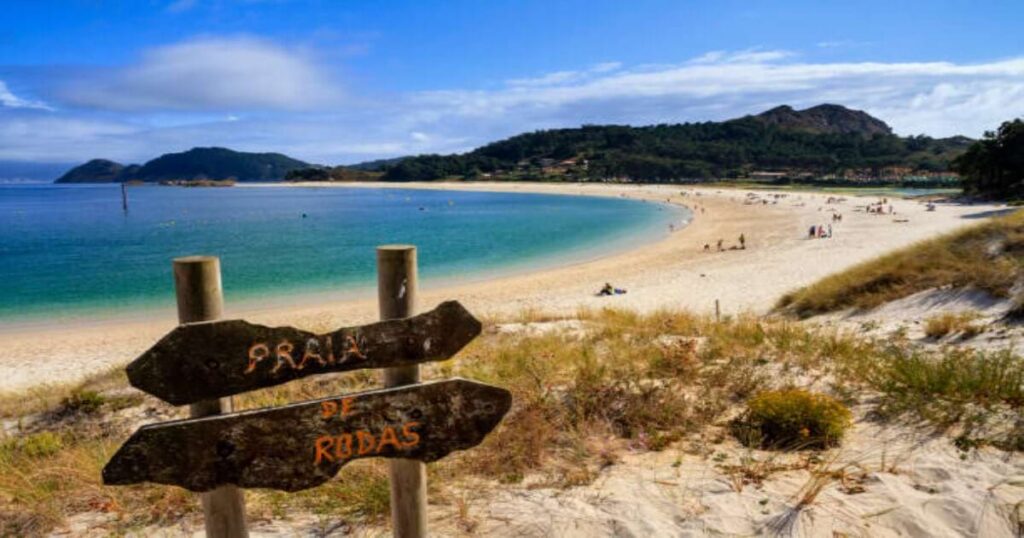
Carnota beach:
Carnota beach is one of the longest beaches in Galicia, stretching along more than 7 kilometres of golden sand. It is located in the province of A Coruña, in a privileged natural environment between Mount Pindo and the Atlantic Ocean. Surrounded by dunes and overlooking the bay of Carnota, this beach offers a quiet and natural environment perfect for those who wish to make a getaway.
The roads leading to the beach are well signposted and, as you drive along, the scenery becomes spectacular. In addition, the village of Carnota allows visitors to explore seafaring life and sample local delicacies. In the vicinity of the beach we can find places such as the Ézaro waterfall, which is well worth a visit.
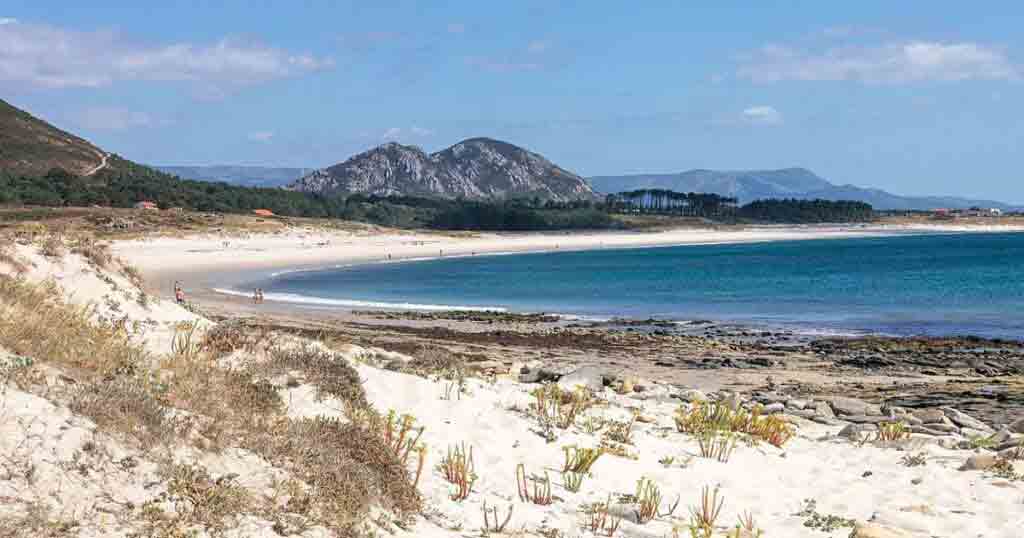
La Lanzada beach:
This beach, located on the peninsula of O Grove, has more than 2 kilometres of fine white sand and is surrounded by crystal-clear waters. It is the ideal destination for lovers of water sports such as surfing and windsurfing, as the waves of the Atlantic Ocean offer ideal conditions for those who enjoy gliding over the waves. At the same time, this beach is steeped in history and legends, specifically with Nuestra Señora de la Lanzada, and forms part of the Natural Reserve of the O Grove Marshes, an area of great ecological importance.
The dunes, marshes and lagoons are the ideal habitat for migratory birds. There is nothing to say about the sunsets from this place; whether walking along the beach, sitting on the sand or enjoying it from any nearby viewpoint, you will be able to enjoy the magical sunset of La Lanzada.
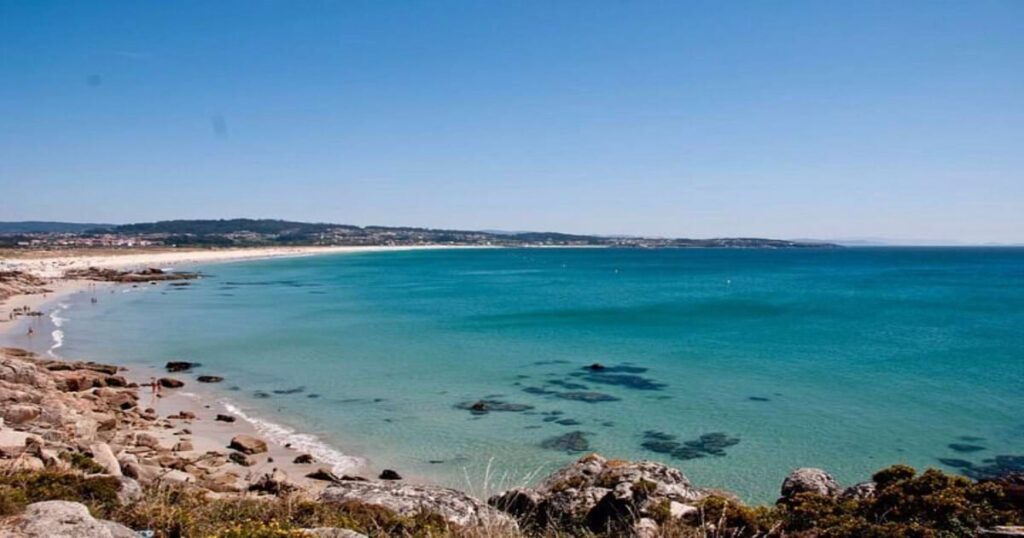
Las Catedrales Beach:
Famous for its rock formations in the form of arches and vaults, it creates the appearance of cathedrals sculpted by wind and water. This Galician jewel is located on the coast of Lugo and has been declared a National Monument, making it one of the main tourist attractions in northern Spain. To visit this site you need to apply for a permit in advance and it is essential to check the state of the tide as, if it is high, you will not be able to enter; you will need the tide to be low to be able to walk along the beach under the arches.
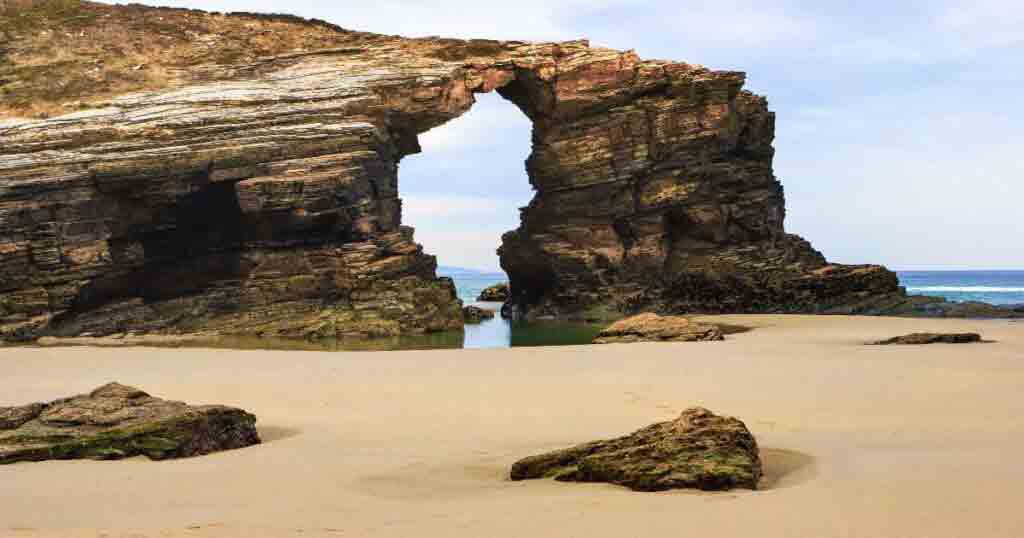
Pedras Negras Beach:
The peninsula of O Grove receives thousands of visitors every summer and especially every corner of San Vicente do Mar. Along the coast you can find paradisiacal beaches with crystal clear waters and rock formations.
It has a path that you can walk along in approximately half an hour, starting at the marina and ending in the Con Negro area. In addition, in the enclave of these beaches is the famous Náutico de San Vicente, a legendary live music venue on the beach. It is the ideal place if you are looking for a drink while enjoying live concerts in a paradisiacal setting.
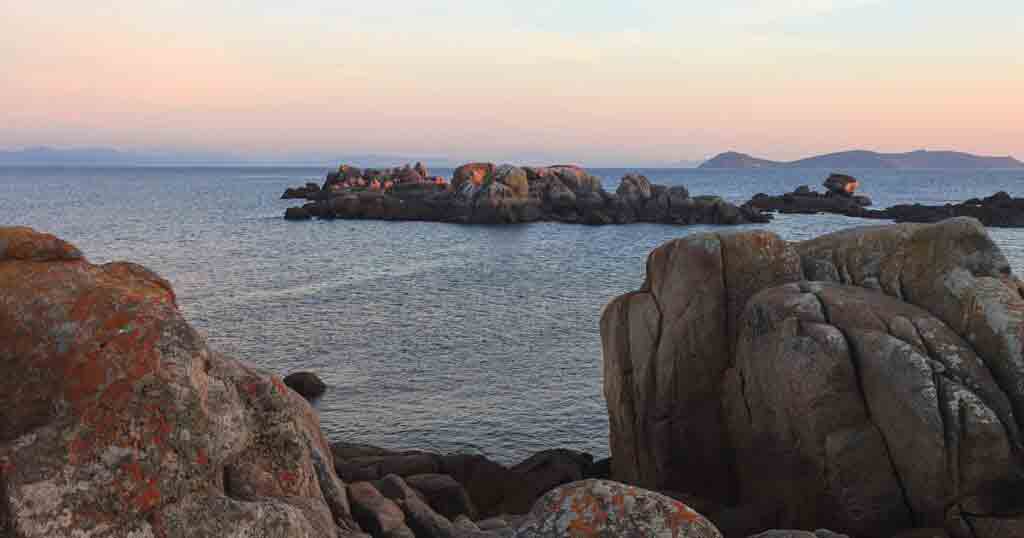
Areoso Islet:
This small hidden paradise in the Ría de Arousa has become a fashionable destination in Galicia. For many it is considered the Galician Caribbean due, in large part, to its waters and sand that run along the islet. It is a protected natural environment that can be accessed by kayak with prior reservation. To enjoy this beach it is worth getting up early and going early, especially on hot days, and take some food with you to enjoy a day in paradise.

Conclusions
In conclusion, Galicia's beaches stand out not only for their natural beauty, but also for their diversity. From the tranquil surroundings of Carnota Beach to the spectacular rock formations of Playa de las Catedrales, every corner of the Galician coast is unique. The Rías Baixas coast won't let you down either, many places like the city of Vigo are worth a visit. If you dare to travel around the area, we invite you to discover What to see in Vigo. Are you ready to immerse yourself in this journey?
